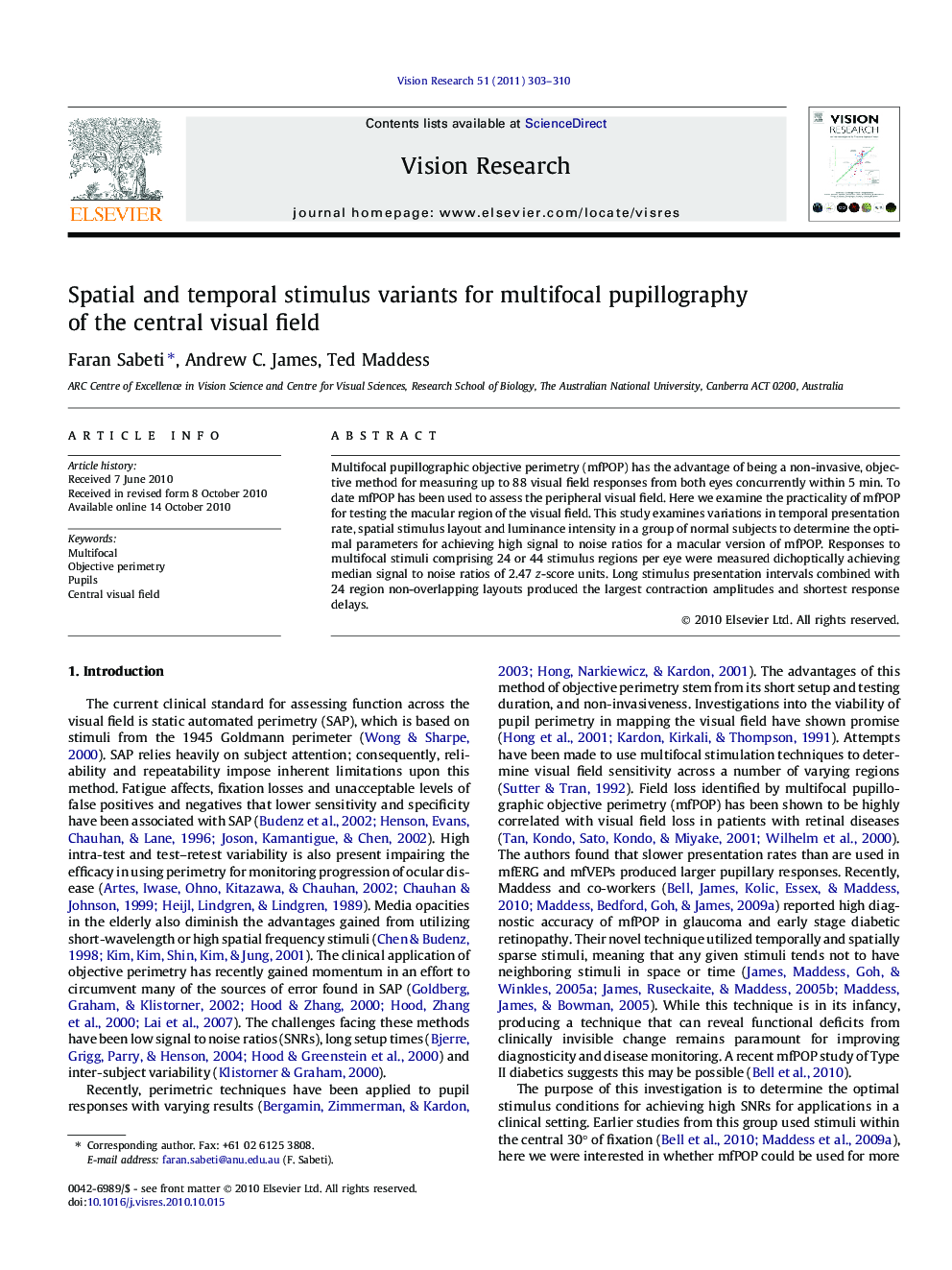| Article ID | Journal | Published Year | Pages | File Type |
|---|---|---|---|---|
| 4034327 | Vision Research | 2011 | 8 Pages |
Multifocal pupillographic objective perimetry (mfPOP) has the advantage of being a non-invasive, objective method for measuring up to 88 visual field responses from both eyes concurrently within 5 min. To date mfPOP has been used to assess the peripheral visual field. Here we examine the practicality of mfPOP for testing the macular region of the visual field. This study examines variations in temporal presentation rate, spatial stimulus layout and luminance intensity in a group of normal subjects to determine the optimal parameters for achieving high signal to noise ratios for a macular version of mfPOP. Responses to multifocal stimuli comprising 24 or 44 stimulus regions per eye were measured dichoptically achieving median signal to noise ratios of 2.47 z-score units. Long stimulus presentation intervals combined with 24 region non-overlapping layouts produced the largest contraction amplitudes and shortest response delays.
Research highlights► Centrally directed stimuli achieved SNRs of 2.47 with multifocal pupillography. ►±15° stimulus arrays produced larger response amplitudes than ±10° stimulus arrays. ► Optimal stimulus properties included non-overlapping slow presentation intervals. ► Response amplitudes tended to saturate at higher luminances.
